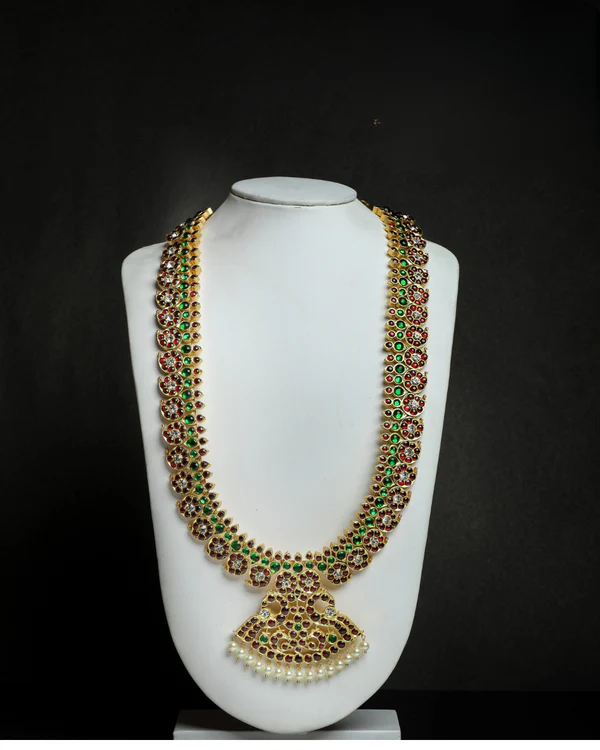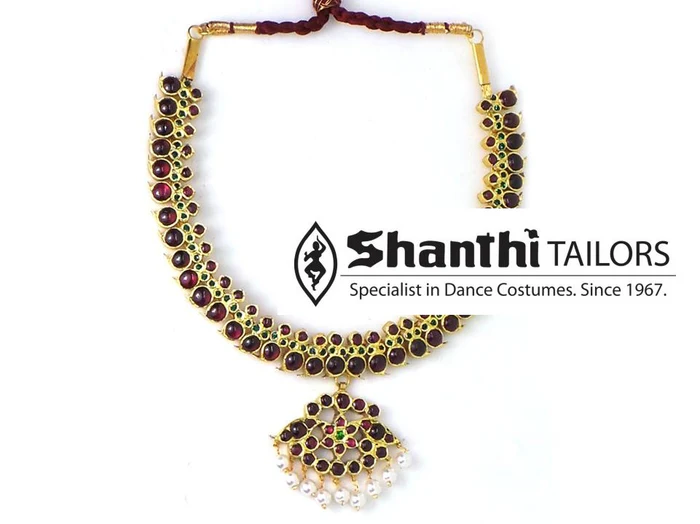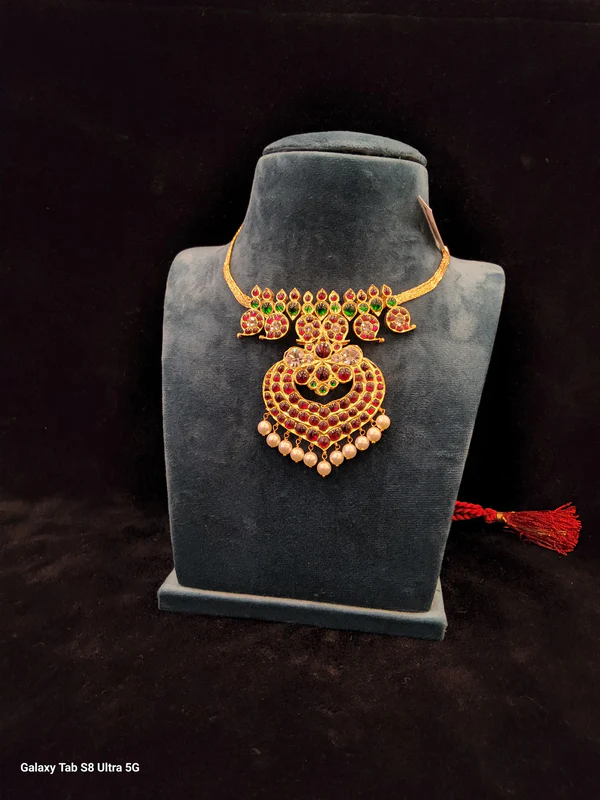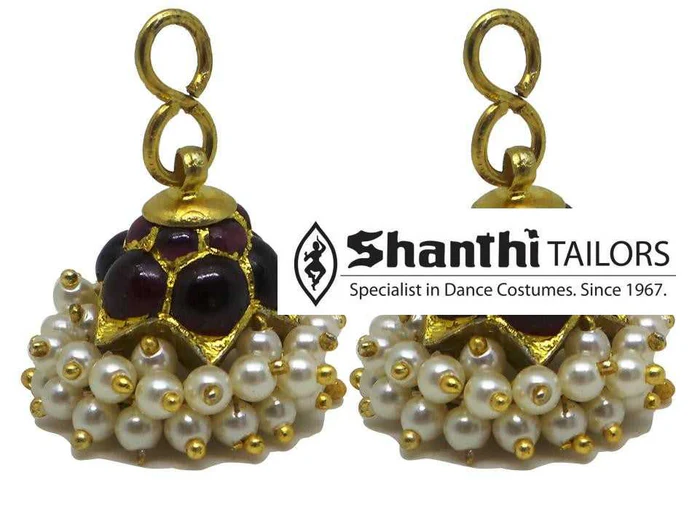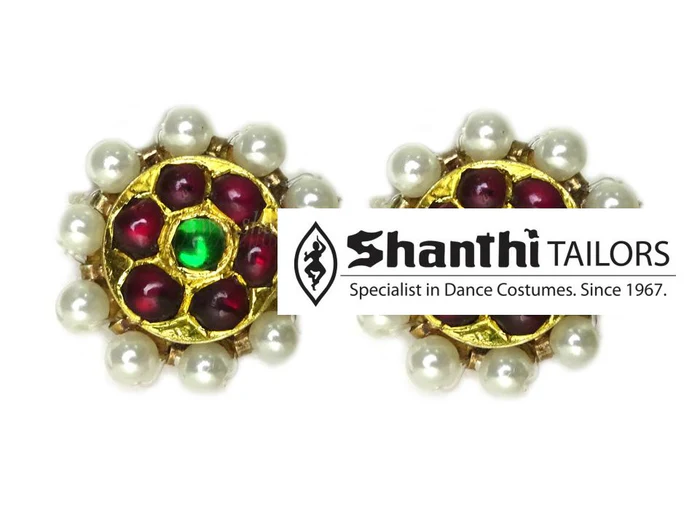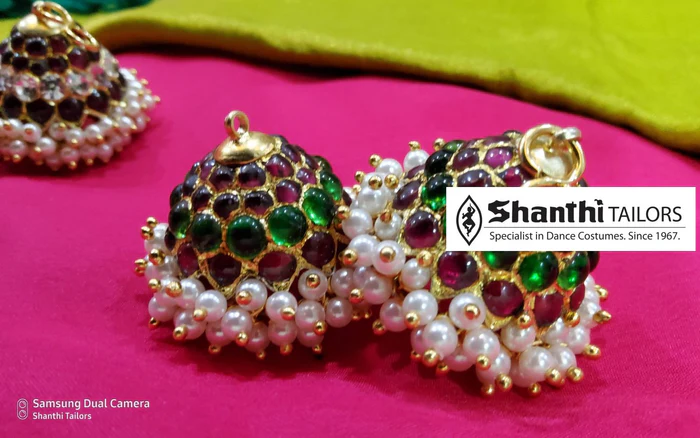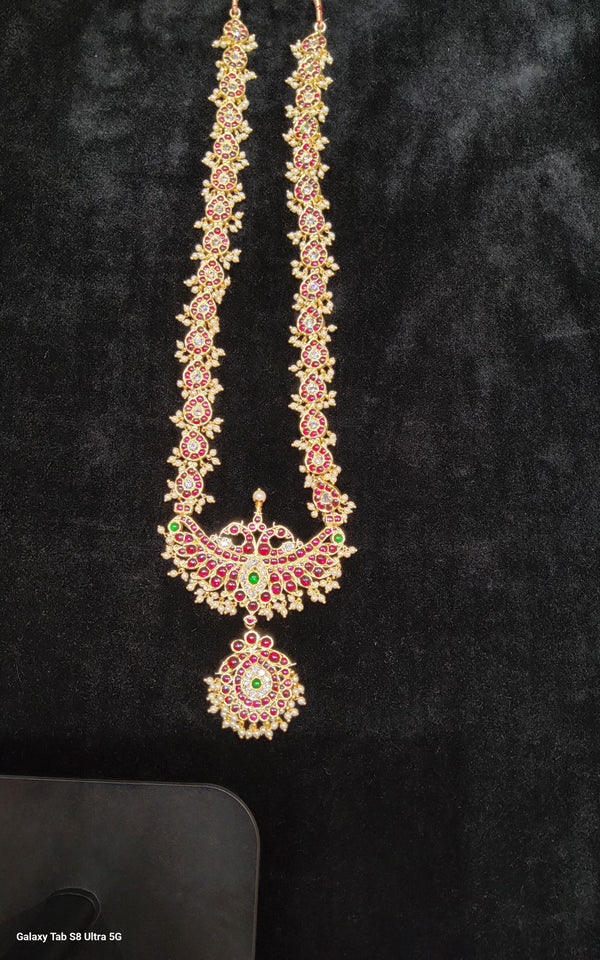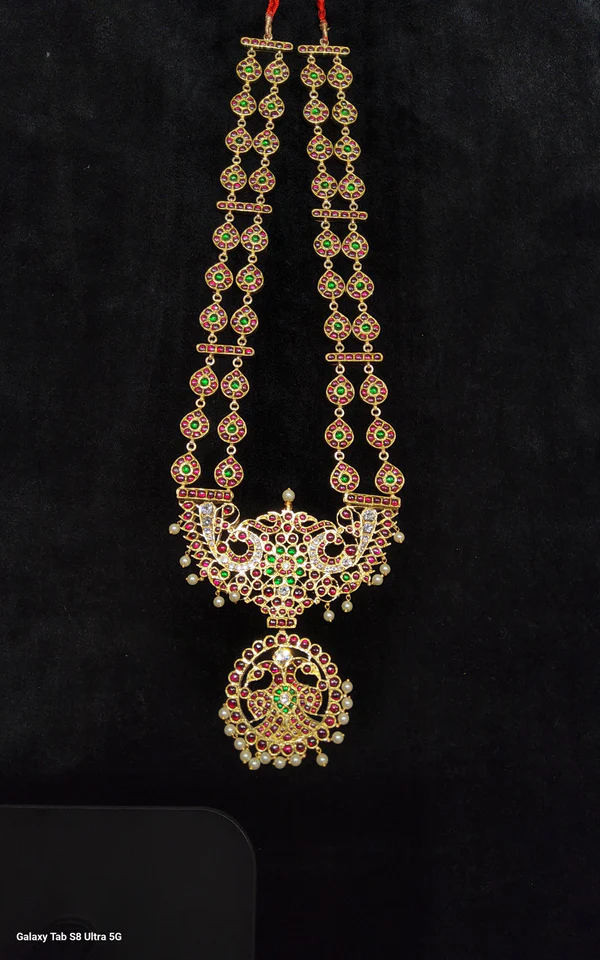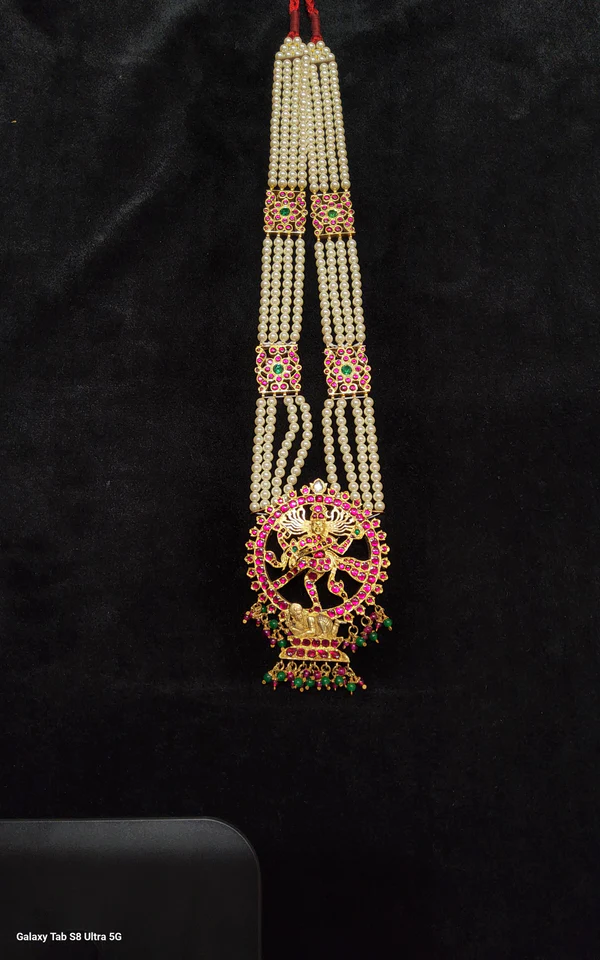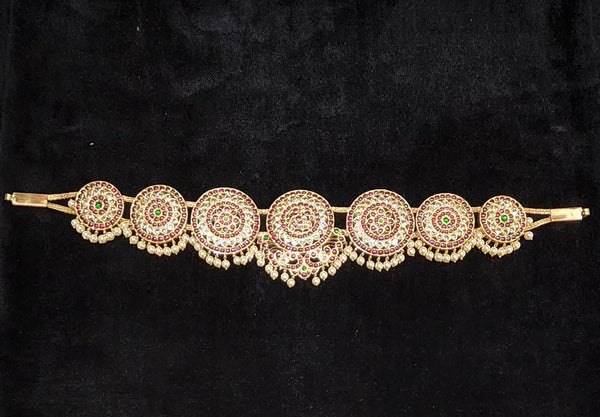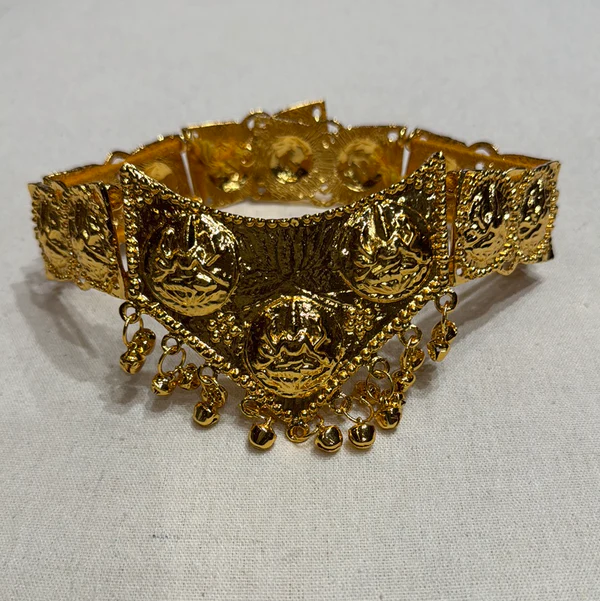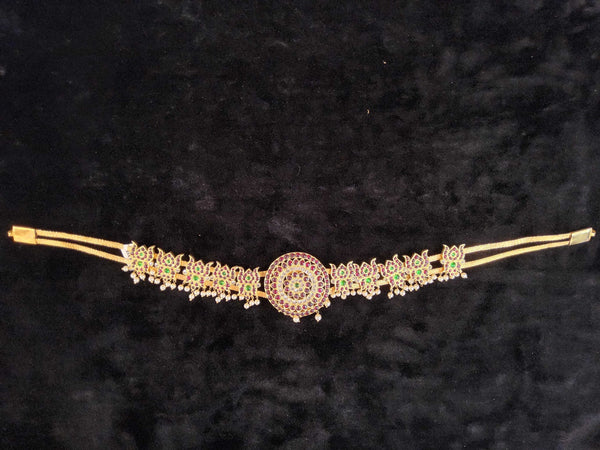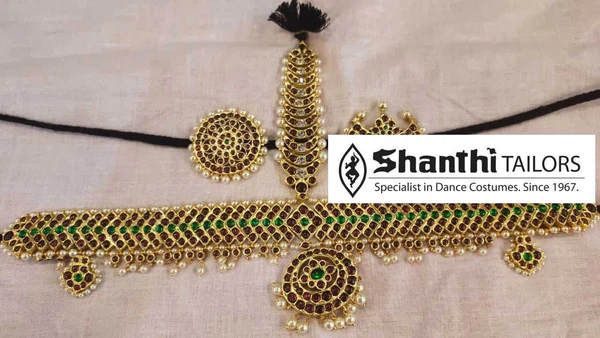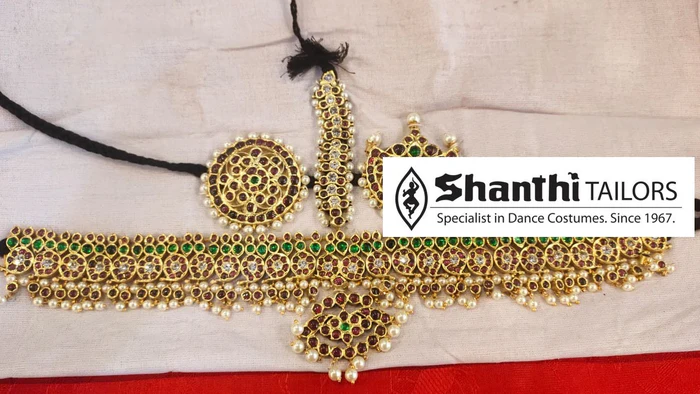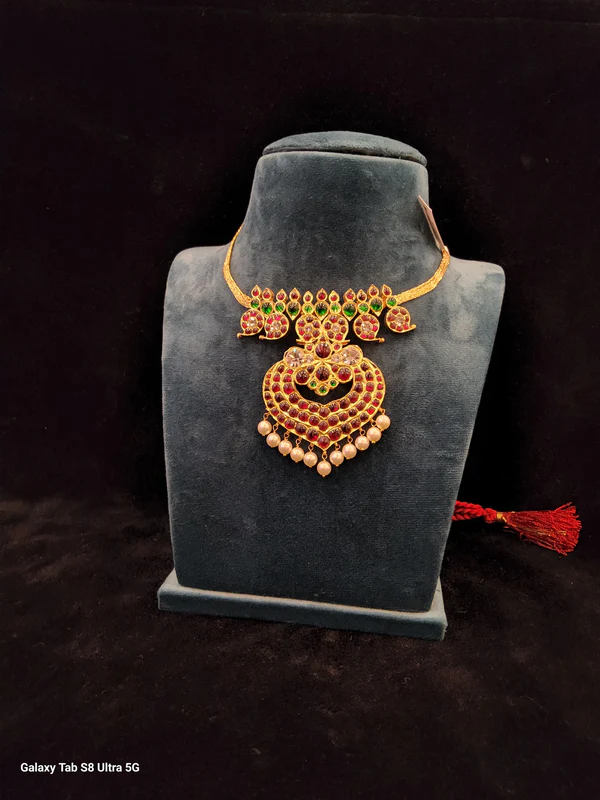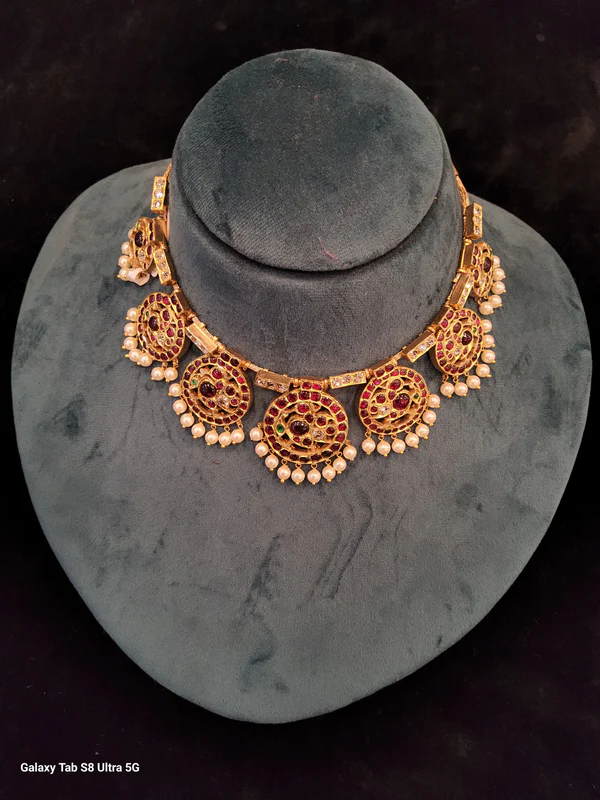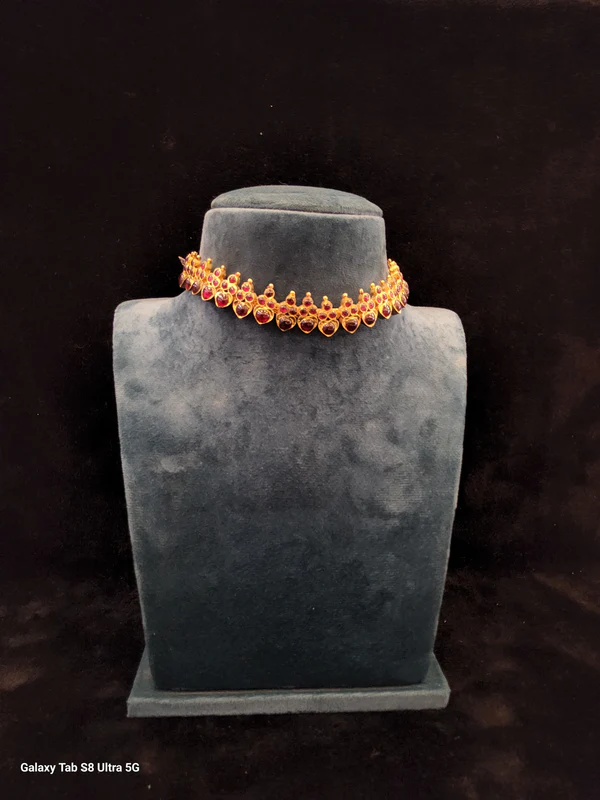Temple jewelry, steeped in the rich cultural heritage of India, is more than just adornment; it is a symbol of divine beauty, tradition, and spirituality. Originally crafted for adorning the deities in South Indian temples, this exquisite form of jewelry has evolved over centuries to become an integral part of traditional Indian attire, especially during festivals, weddings, and other auspicious occasions.
Intricate Designs and Artisanal Excellence
Temple jewelry is renowned for its intricate designs, often inspired by the architectural splendor and sacred motifs found in ancient temples. Each piece is a work of art, meticulously handcrafted by skilled artisans using traditional techniques passed down through generations. The jewelry typically features motifs of gods and goddesses, temple pillars, peacocks, elephants, and flowers, symbolizing prosperity, protection, and devotion. The attention to detail in each piece reflects the devotion and craftsmanship of the artisans, making every item a unique masterpiece.
Luxurious Materials and Gemstones
Traditionally made from pure gold, temple jewelry exudes a luxurious and regal charm. The rich golden hue is often complemented by the use of precious and semi-precious gemstones such as rubies, emeralds, pearls, and diamonds. These gemstones are carefully selected and set into the jewelry to enhance its beauty and add a vibrant touch of color. The combination of gold and gemstones creates a stunning contrast, making temple jewelry a captivating accessory that draws attention and admiration.
Symbolism and Spiritual Significance
Temple jewelry holds deep spiritual significance, often associated with divine protection and blessings. The depictions of deities and sacred symbols are believed to bring prosperity, ward off evil, and invoke the blessings of the gods. Wearing temple jewelry is not just about adorning oneself; it is also a way of expressing devotion and connecting with the divine. This spiritual aspect makes temple jewelry a cherished possession, often passed down as heirlooms through generations, carrying with it the blessings and traditions of the family.
Versatility and Timeless Elegance
While temple jewelry is deeply rooted in tradition, its timeless elegance makes it versatile enough to be worn with various outfits. It complements traditional Indian attire such as sarees and lehengas, enhancing the overall look with its opulence and grace. Temple jewelry sets, including necklaces, earrings, bangles, and rings, are often chosen by brides to complete their bridal trousseau, adding a touch of grandeur and divinity to their special day. Even when paired with contemporary or fusion outfits, temple jewelry adds a regal and sophisticated touch, making it a versatile choice for any occasion.
Types of Temple Jewelry
Necklace Sets: Temple necklaces, whether long or short, are adorned with intricate carvings of deities, making them the centerpiece of any traditional outfit. The sets often include matching earrings and complementing pieces like bangles or rings, creating a harmonious and cohesive look.
Earring Sets: Temple earrings, including jhumkas, chandbalis, and studs, are designed to frame the face beautifully. These earrings are often embellished with pearls and gemstones, adding a touch of elegance and tradition to the wearer’s ensemble.
Full Jewelry Sets: A complete temple jewelry set typically includes a necklace, earrings, bangles, rings, and a waist belt (vaddanam), offering a coordinated and regal look. These sets are often chosen for weddings and major religious ceremonies, where tradition and grandeur go hand in hand.
A Timeless Legacy
Temple jewelry is not just a fashion statement; it is a timeless legacy that celebrates the rich cultural heritage of India. Whether worn during festivals, weddings, or as part of a daily devotion, each piece of temple jewelry tells a story of tradition, spirituality, and artisanal brilliance. Its timeless appeal ensures that temple jewelry remains a cherished and revered part of Indian culture, symbolizing the eternal connection between beauty, art, and the divine.

